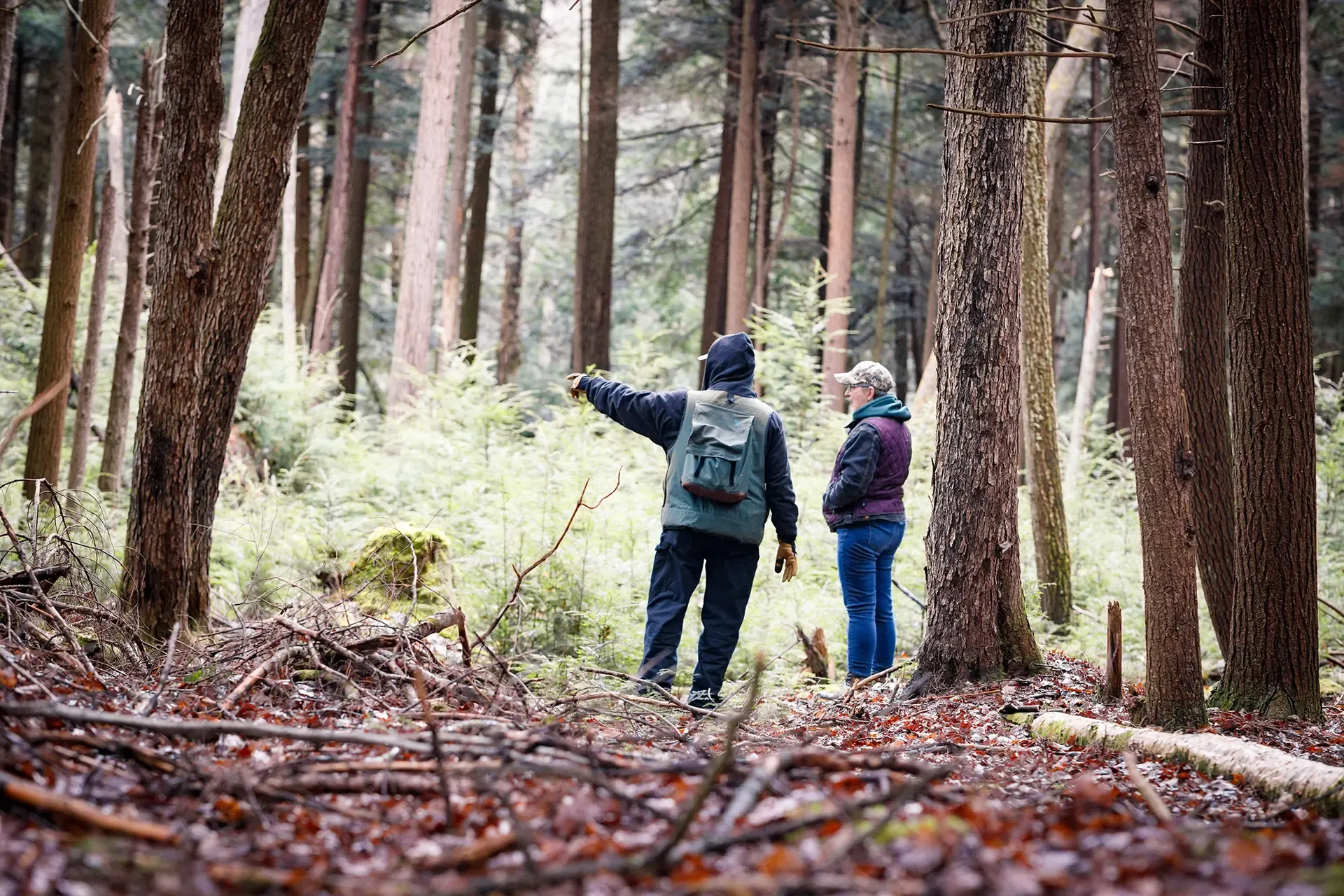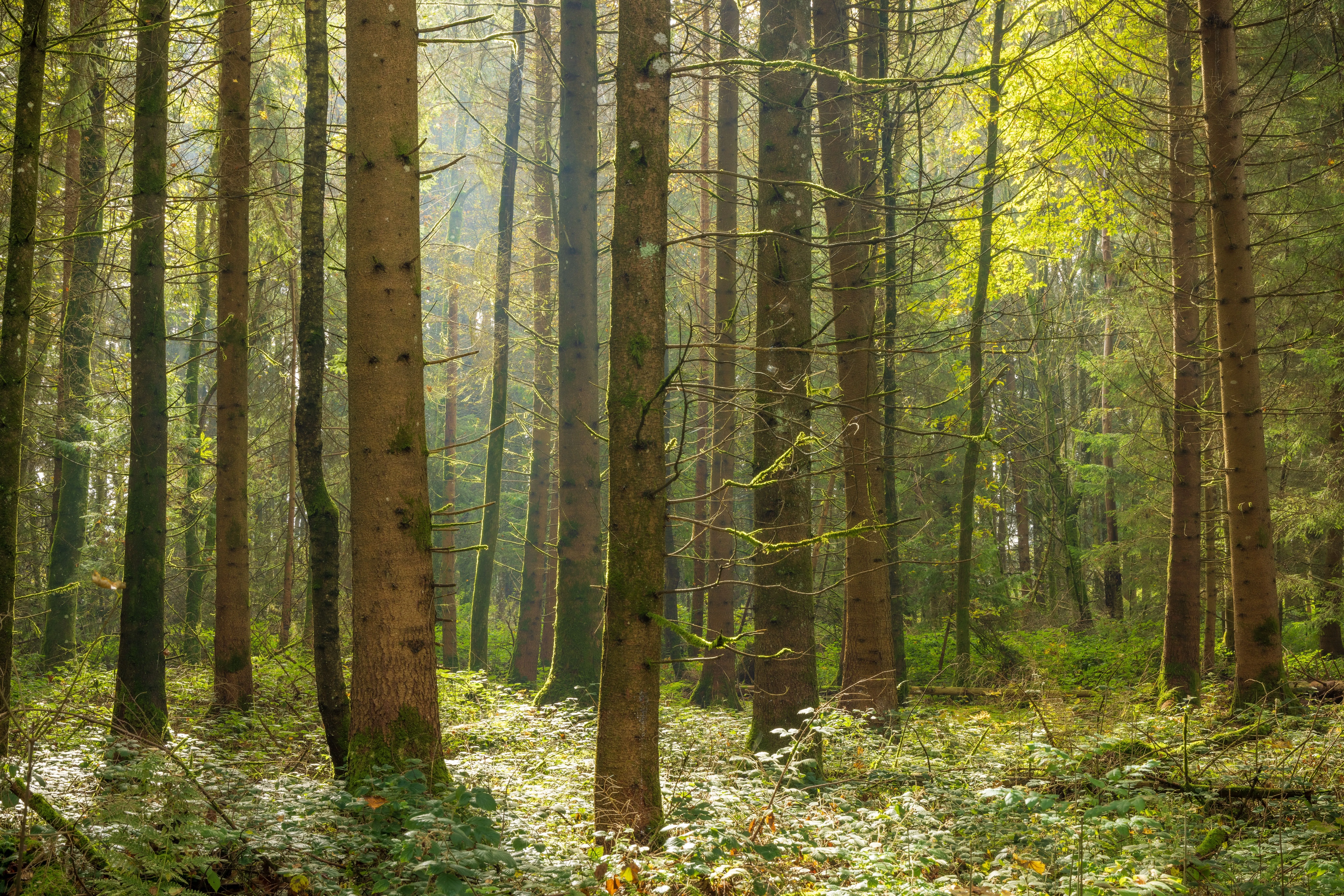7 Terms You Need to Know About Carbon and Family Forests

The issues of climate change and sustainability are important ones. In order to tap into the opportunity within family forests to address these issues, it is critical to understand why these forests and how. To help facilitate this, the American Forest Foundation (AFF) has developed a set of terms common to climate discussions, along with an explanation of how those terms relate to family forest owners, and to AFF’s and The Nature Conservancy’s collaborative program, the Family Forest Carbon Program.
Family Forest Owner – A family forest owner is defined as individuals, families, trusts, estates, family partnerships, and other unincorporated groups of individuals that own forest land. They are considered non-industrial forest owners. Family forest ownerships vary in size, from 1 to 5,000 acres. But the majority, more than 80% fall below 1,000 acres in size – of these acres, less than 11% are in existing carbon projects. Learn more about family forest owners.
Natural Climate Solutions – Natural climate solutions are conservation, restoration and improved land management actions that increase carbon storage or avoid greenhouse gas emissions in landscapes and wetlands across the globe. Forests represent the best option for natural climate solutions. In order to implement forest-based natural climate solutions at a meaningful scale in the U.S. will require the engagement of family forest owners, who collectively own the larger portion – 36% - of our nation’s forests – more than the federal government. Find more research on this topic from our partner The Nature Conservancy.
Carbon Credit – A carbon credit is a unit of measure representing one MTCO2E (metric ton carbon dioxide equivalent) that has either not been emitted, or that has been removed from the atmosphere as a result of a specific project. To issue verified and credible carbon credits, projects must meet strict standards related to additionality, permanence, and other factors. In the Family Forest Carbon Program, credits are created when family forest owners implement specific management practices that help their forest sequester and store more carbon over time.
Voluntary Carbon Market – The voluntary carbon market encompasses transactions of carbon credits between carbon programs and private companies or other entities. The Family Forest Carbon Program generates credits from the actions implemented by landowners, and sells those credits to companies, agencies or other actors. The majority of the revenue from these sales goes back to the landowners in the form of incentive payments.
Mitigation Hierarchy – A mitigation hierarchy is a concept used for over a century in natural resource management and includes prioritized steps that lead to the best outcomes for people and nature. These steps are generally avoid, reduce, restore, compensate/offset. The Family Forest Carbon Program, specifically, works with companies and other entities that have made clear commitments to vigorous and comprehensive climate action first and foremost, outside of their purchase of credits. Using carbon credit purchases as a company’s only strategy to address climate change is not supported by the Family Forest Carbon Program or by the broader climate community. This not about offsetting your emissions – it is about investing in America’s family-owned forests as one of several investments your company can make to fulfill its responsibility to address the threat of climate change.
Carbon Insetting or Supply Chain Interventions – These are new terms that encompass an evolving concept within corporate climate efforts. Carbon insetting occurs when a company make investments within their supply chain that lead to measurable and verifiable emissions reductions. Conceptually, these investments could be utilized to address a company’s Scope 3 emissions (established by the Greenhouse Gas Protocol, Scope 3 emissions are indirect emissions arising from a company’s value chain). Because family forest owners provide more than 50% of the wood fiber for the forest products supply chain in the U.S., and the majority of companies rely on forest products in some capacity, family forest owners have a large role to play in achieving carbon insetting or supply chain interventions.
Forest Co-Benefits – Forest benefits are the values or natural resources that are produced from a forest such as clean air and water, wildlife habitat, biodiversity, recreational spaces, economic stimulus for rural communities and carbon sequestration. These benefits can be increased through sustainable forest management. The Family Forest Carbon Program provides a range of forest benefits making it a unique investment for any company. Family forest owners are uniquely positioned to provide those benefits, because the vast majority of family owners own their land for these benefits, and not solely for financial considerations. Learn more about family forest benefits and about the attitudes of family forest owners towards them.
Interested in receiving more information and insights like this about forests and carbon in your inbox? Sign up to receive the Family Forest Carbon Program Newsletter.
If your company is interested in starting a conversation today on how they can partner with family forest owners to address carbon, contact John Ringer at ffcp_partnerships@forestfoundation.org.
Related Articles

December 4, 2025
Forest Carbon Project Issued First Ever Credits
Conservation organizations the American Forest Foundation (AFF) and The Nature Conservancy (TNC) announced today the issuance of improved forest management (IFM) carbon credits to the Family Forest Carbon Program (FFCP) from standards setter Verra under its Verified Carbon Standard (VCS) Program. This marks the first issuance of credits produced using Verra’s VM0045 improved forest management (IFM) methodology, which was co-developed by Verra, AFF, TNC, and TerraCarbon.

December 1, 2025
Tackling Wildfire Through Partnership: AFF’s Stacked Benefits Model
A few miles outside Grass Valley, California, a narrow road winds past homes tucked into dense forest. From the ground, it is easy to forget that these trees are doing something extraordinary. They are standing between the community and the next wildfire.

November 20, 2025
New Film Showcases Carbon Project’s Impact on Family Landowners and Nature
The American Forest Foundation (AFF), a national organization committed to empowering family forest owners to create meaningful conservation impact, announced today the release of a new film that tells the story of the Family Forest Carbon Program (FFCP) and its impact on people and the planet.